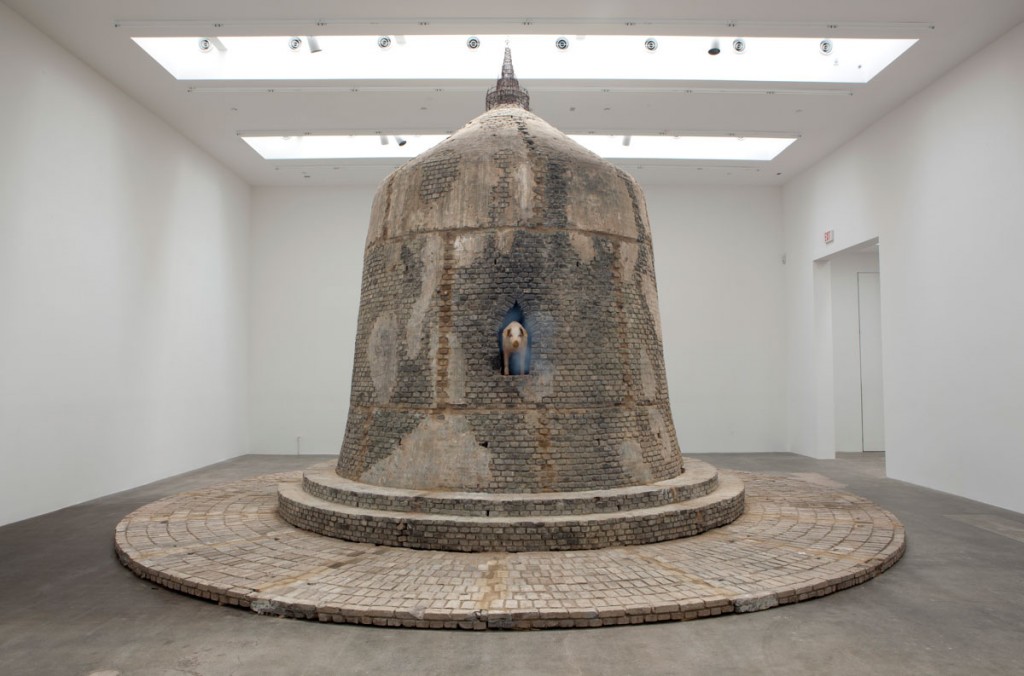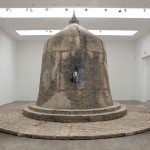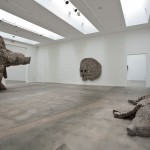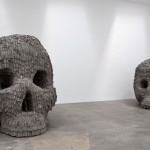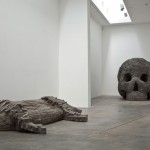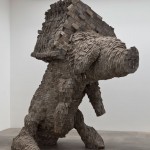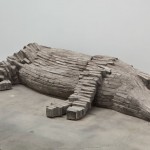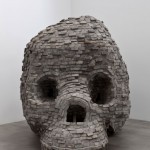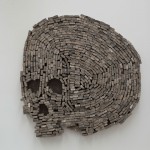Zhang Huan | 49 Days
Zhang Huan est un artiste chinois né en 1965 à Henan. Après avoir étudié la peinture et enseigné l’histoire de l’art, il passe à l’art de la performance, considérant cette forme d’expression comme un moyen d’interagir avec le monde. Son corps devient son support et son mode d’expression. Dans les années 1990, Zhang se rend célèbre et s’attire la censure du gouvernement pour ses œuvres choquantes dans lesquelles il soumet son corps nu à la douleur ou la torture. Installé à New York en 1998, Zhang se promène dans la rue avec des morceaux de viande crue attachés au corps, créant l’image d’un énorme morceau de viande en mouvement. Ses œuvres d’auto-expression lui ont également valu une reconnaissance unanime.
En 2009, il crée sa première sculpture, intitulée Pagoda. Représentant une cloche de plusieurs mètres de haut, la sculpture est constituée de briques prélevées sur des chantiers de démolition à Shanghai. Au centre de la cloche, un porc empaillé apparait au milieu d’une fenêtre qui laisse s’échapper des nuages de cendres d’encens dans la galerie.
Pagoda est en partie un hommage à Zhu Ganggiang, un porc devenu célèbre après avoir survécu 49 jours dans des décombres, après le dramatique tremblement de terre survenu en 2008 dans la province du Sichuan. Ayant eu vent de l’histoire de ce porc, Zhang décida de l’adopter et de l’élever dans son atelier, où un employé est payé à temps plein pour s’occuper de son bien-être. Le nombre « 49 » (duquel l’exposition tire son nom) a un double sens : il évoque à la fois l’histoire de Zhu Ganggiang, bien entendu, mais aussi la croyance Bouddhiste selon laquelle l’âme resterait sur terre pendant 49 jours entre la mort de son propriétaire et sa réincarnation.
En plus de Pagoda, Zhang vient d’exposer à Los Angeles une nouvelle série de sculptures faites à partir de briques et représentant des porcs et des crânes. Faisant à nouveau référence à Zhu Ganggiang; et plus largement au thème de la mort, les sculptures viennent compléter Pagoda tant par leur forme que par leur teneur émotionnelle.
For nearly two decades, Zhang Huan has established himself as one of the preeminent artists to emerge from China since the early 90s. Zhang has developed a vast body of work ranging from endurance-based body performance (while living in New York) to large-scale public commissions, painting and sculpting with incense ash and even reinterpreting Handel’s classic opera Semele at the Théâtre Royal de la Monnaie in Belgium and the Poly Theater, Beijing.
Central to the 49 Days exhibition at Blum & Poe will be Pagoda, 2009, an imposing brick sculpture originally displayed at the Shanghai Art Museum. The twenty-two foot tall bell shaped pagoda is comprised of salvaged brick collected from demolition sites surrounding Shanghai (centuries old buildings that have been bulldozed in place of modern architectural progress). Near the center of the structure is a carved window from which a taxidermied pig periodically emerges and from where clouds of incense ash are dramatically emitted into the gallery.
Pagoda serves partly as a tribute to Zhu Gangqiang, or the « Cast-Iron Pig », now famous for having survived 49 days in rubble, following China’s historic 2008 Sichuan earthquake. Upon hearing its story of survival, Zhang negotiated the pig’s purchase and has subsequently adopted him into his studio, employing a full-time caretaker and making his likeness a central part of his artistic practice. The number « 49 » (from which the show takes its title) is dually significant, both for its relationship to Zhu Gangqiang’s story and for its connection to Buddhist thought, as the Buddhists believe 49 days is the amount of time ones soul remains on earth between death and reincarnation.
In addition to Pagoda, Zhang will present a series of newly constructed brick sculptures taking the form of pigs (often larger than life) and skulls. Relating back to the story of Zhu Gangqiang, and larger notions of mortality, the pigs and skulls compliment Pagoda in their formal construction and emotional tenor. Zhang will present sculptures that function as both freestanding floor pieces and two-dimensional hanging wall pieces, in some cases weighing in excess of 4,000 pounds. The sculptures testify to Zhang Huan’s interest in personal, community and artistic survival; topics he has been exploring in depth since his physically intense performance pieces of the early 90s. The brick may also be viewed metaphorically, as the works are constructed by the hands of Chinese laborers, representing the building blocks of a new world super power and place of constant reinvention that depends on its vast population to ensure progress as a nation.
+
 Rough Dreams
Rough Dreams